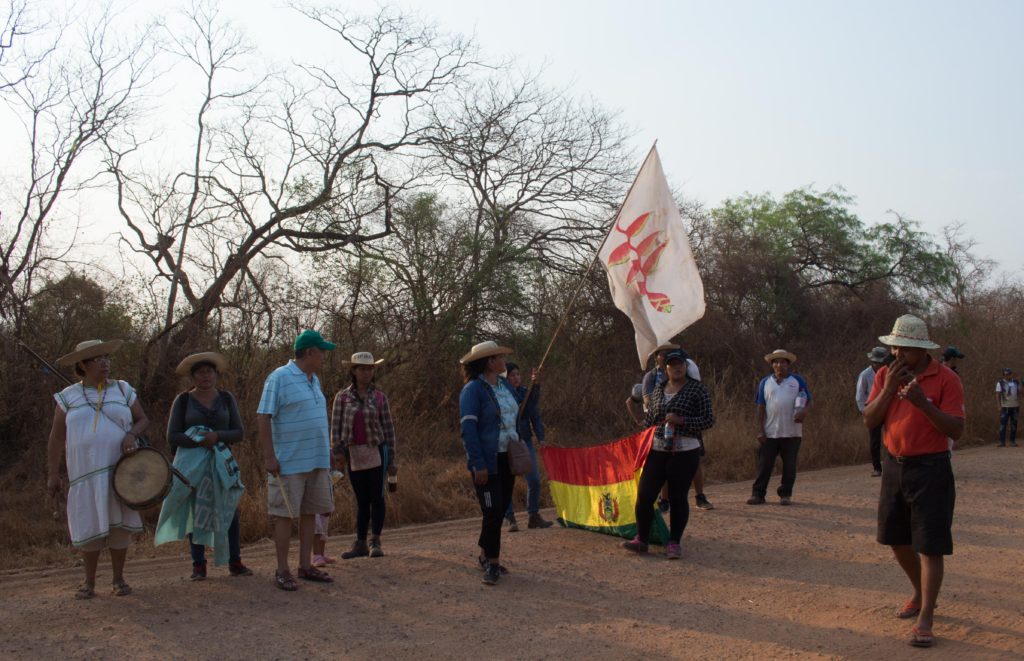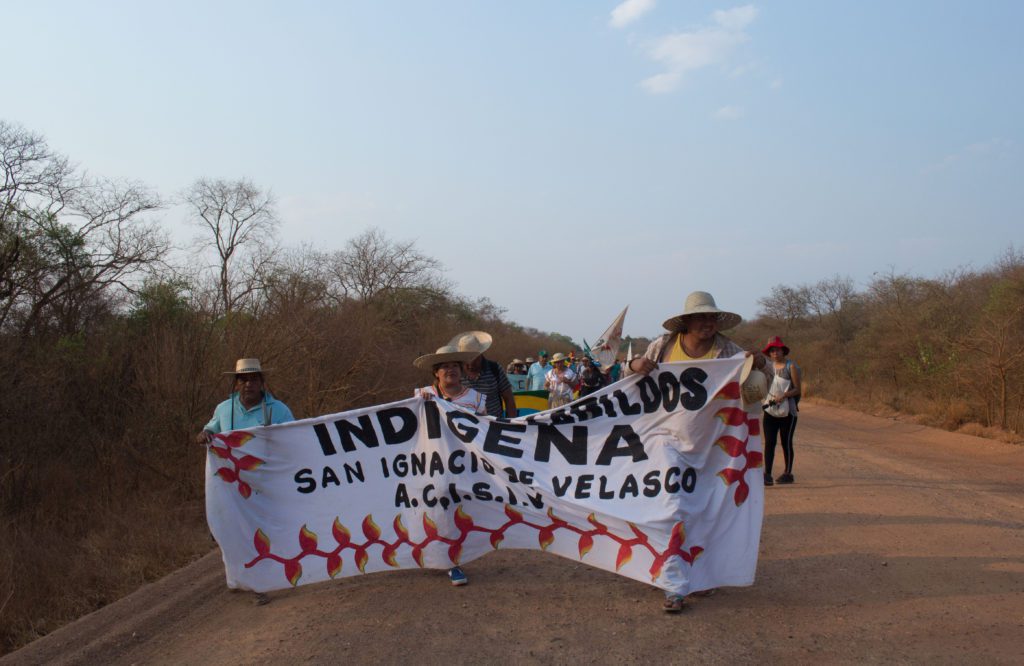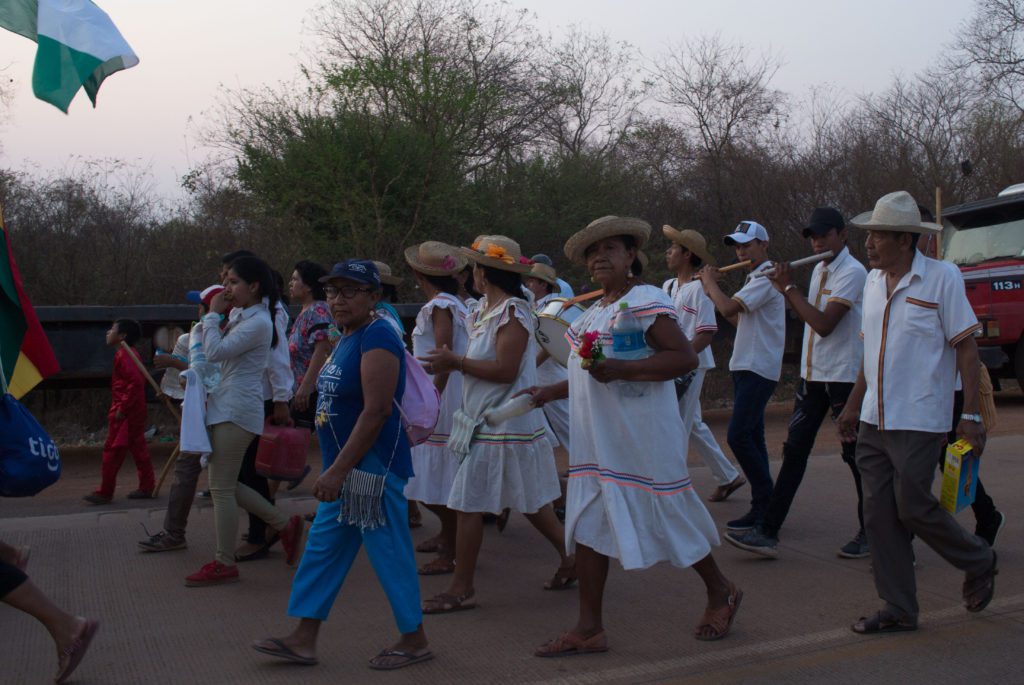The year that is coming to an end will be remembered in Bolivia not only for the hurricane winds that drove the fall of Evo Morales, the country’s first indigenous president; but also because of the fires those winds brought with them. They burned forests, ecological reserves, indigenous territories and national parks in eight of Bolivia’s nine departments. According to estimates by the Friends of Nature Foundation (FAN), in all of Bolivia more than 5 million hectares (nearly 20,000 square miles) of forest were burned, and in the department of Santa Cruz alone, approximately 4 million; we are talking about an area larger than that of Switzerland or Costa Rica.
TO READ THIS ARTICLE IN SPANISH CLICK HERE
The fires burned in the Valleys, in the Gran Chaco and in Amazonia. Located in the two latter regions is the Chiquitanía, undoubtedly the region most devastated by the fires. In this area, the terrible consequences of climate change gave no respite and set the stage for this disaster. During more than two-thirds of the current year and until almost the end of the fires, the rains were absent and the average heat levels were around 35 degrees Celsius (95 Fahrenheit). The winds ranged between 80 and 100 km/hour (50-60 mph) and according to studies of the Tierra Foundation, the humidity level was reduced by 50% in relation to last year.

This area burned for more than three months without the national government being able to control or effectively respond to the clamor of the indigenous communities and civil society organizations, which demanded the declaration of a national disaster so that expert international aid could enter Bolivia.
There are still no serious studies on the damage caused to the Chiquitanía. Some superficial reports have thrown out some terrifying figures: millions of incinerated animals; indigenous peoples and peasants even more impoverished and with their waters contaminated by ashes; and more than 600 varieties of destroyed trees, which, in a best-case scenario and if the hand of man and development do not intervene, would take between 200 and 500 years to regenerate naturally. Reforestation is far from a priority of the new government and even less for private entrepreneurs, not only because of its high cost, but because the forest is considered a commodity and a natural resource to be exploited, as demonstrated by governments previous to that of former President Evo Morales.

The flames that generated the devastation
The devastation of the Amazon, the Gran Chaco and the Chiquitanía are driven by economic interests of large business sectors and colonizing peasants connected to MAS, the party that was governing Bolivia. Since Evo Morales’ second term, the “Patriotic Agenda” has been promoted, a package of projects that aims to maintain the level of economic growth in the Andean country. Based on the conclusions of this agenda, peasant sectors and agribusiness entrepreneurs proposed to expand the agricultural frontier by one million hectares per year, arguing, deceptively, that they would guarantee food sovereignty with transgenic corn and soybeans, a product which would later become the production base for the much-publicized “biofuels” that are currently being marketed from all gas stations in Bolivia.
As a result of the “Patriotic Agenda”, Law 337 was passed, which established “the big pardon” for illegal clearing. After its passage, deforestation shot up by more than 50 percent compared to 2012.
In 2015, once again the National Government, private entrepreneurs and colonizing farmers promoted the summit called “Sowing Bolivia”, and as a result they approved Law 741, which allows the individual clearing of 5 to 20 hectares without any requirements, with the terrible consequence of increasing by 250,000 additional hectares the amount of forest being clear-cut, in addition to that which was already allowed by Law 337.
In 2019, the Morales government approved Decree 3973, which legalized the clearing and burning of permanent forest production lands – that is, protected lands in which some regulated forestry had previously been allowed. This decree would be rejected by the indigenous organizations of Eastern Bolivia, who once again denounced the Morales government of ecocide and of consenting to the destruction of their “casa grande (big house)”.
Alcides Vadillo, national head of the Tierra Foundation, answered our question: Did the Morales Government make a strong enough attempt to quell the flames in the Chiquitania?
“The government of Evo Morales is responsible for the fires not because it lit the wick; but because it was the government that authorized the levels of clearings that we have, it was the government that authorized the burning under a concept of controlled burning, so that with the winds that we have, the ‘controlled burns’ were not controlled in the least. And the government is responsible because until today it has not shown us a person guilty of the fires. There are no culprits and nobody wants to assume the responsibilities. The government did everything to generate the disaster we live today.”
Finally the rains appeared in the devastated areas and ultimately put out the flames. If they had not, we would be talking not only of 5,000,000 hectares reduced to ashes; but of national parks, protected areas and devastated indigenous territories, not only within Chiquitania, Santa Cruz or Bolivia, but also advancing with greater force toward Paraguay.

The tenth indigenous march in defense of the Chiquitano Forest
Resulting from the direct impacts on indigenous communities in Chiquitanía, on Sept. 16 the people who were currently living there organized themselves to walk the 370 kilometers from San Ignacio de Velasco to the city of Santa Cruz, demanding from the Morales government the urgent declaration of a national disaster, and the repeal of laws that allowed burning and new settlements in their territory. The indigenous leadership denounced government intervention through agents who tried to divide and co-opt some leaders. Jhenny Suarez, president of the women’s organization of the CIDOB, points out: “The government wanted to divide us from the beginning through its political operators. At the beginning, we assumed the responsibility to mobilize in unity and with all organizations in the region; but before starting the march, the government managed to get an important group of indigenous brothers to withdraw their support. We are used to fighting these divisive attitudes, we have lived it in the Tipnis (Isiboro-Sécure Indigenous Territory and National Park), and we are living it now.” The Tipnis is an Indigenous territory famous for its fierce resistance to the construction of a road through its territory.
The indigenous mobilization took place in the middle of a media blackout and attempts at co-optation by the central government and the civic and political organizations of the city of Santa Cruz. Even so, the march arrived in the city of Santa Cruz at the height of the pre-electoral tensions, and remained there, throughout the whole period of political and social upheaval that ended with the resignation of Evo Morales.
Pablo Solón, director of the Solón Foundation, says that the new president of the “transition government” should assume the responsibility of repealing the laws and decrees that drove the fires of the Chiquitanía as soon as possible. The next government, which will be chosen in the new elections since the recent ones have been annulled, will take office in the middle of next year and will not be able do anything to stop the new fires, since under Law 3973, the clear-cutting and burning of this and other territories will continue.
The Ayoreos, the indigenous communities most affected by the Chiquitano fires
The ethnic roots of the Ayoreo people who currently inhabit a part of the Chiquitano territory is in the uncontacted tribes that are in Ñembi Guasu, a reserve that is within Charagua Iyambae, the first autonomous indigenous community to consolidate in plurinational Bolivia, and which the fire also reached.
Alcides Vadillo tells us that within the Chiquitano territory, there are seven Ayorean communities seriously affected by fire, not because their crops, which are few, have been burned, but because it was within the burned forest that they found their food, as well as the bark of the trees that served as raw material to make the handicrafts that they sold in the cities. The water they consumed is contaminated by the fish that died because of the toxic ashes that fell on the rivers and dams.
The chances of the Ayoreos starting a mass migration to the city of Santa Cruz are greater than ever. In the bus terminals and in the shopping centers they are begging or selling the few handicrafts they still have left. These migrations add to those already existing in the peripheries of the city of Santa Cruz, where the natives are mistreated and discriminated against because of the stigma against their nomadic roots.
The flames that contributed to the fall of Evo Morales
Undoubtedly one of the issues that most infuriated the country this year was that of the fires in the Chiquitanía. The images of the burning forest, burned animals and rural populations displaced by fire were the daily bread for months. As this tragedy remained fresh in the memory and indignation of urban populations, it was also used to promote a mobilization, which kept shifting its demands. In the beginning the demand was a second round of the general elections, then an annulment of the recent one, ending with a demand for the resignation of Evo Morales and Alvaro Garcia Linera. After a partial report by the Organization of American States, in which they found serious indicators of electoral fraud, the mobilizations began turning more violent, to the point of threatening families close to government officials and burning the homes of ministers and even of Evo Morales’ sister. Finally the pressure from the police and suggestions from the armed forces resulted in bringing about the end of Evo Morales’ government and the subsequent militarization that took more than 30 lives.
With the end of the Evo Morales era, some threats of mega-project constructions or the expansion of the agricultural frontier in protected areas or indigenous territories have been momentarily suspended. The transition government is supported by the agribusiness sector, among others, which also supported former President Evo Morales.
The current government has already released signs of what its future policies might be with respect to the protected areas and indigenous territories. The indigenous organizations, dissidents of the previous government, have declared themselves in emergency and are joining forces under the National Coordinator of Indigenous Peasant Territories and Protected Areas (CONTIACAP), to resist future aggressions to their territories. Those who are affiliated with the previous regimen will have to seek alliances with their peers and join forces.
Alan Zambrana Lineo is a documentary maker and freelance photographer who has covered the struggles against extractivism and the dispossession and recovery of indigenous territories in the Bolivian highlands, valleys and Amazon. He has produced the audiovisual memoirs of indigenous and peasant mobilizations in Bolivia since 2011. Self-taught journalist and member of the Chaski Clandestina, an autonomous action and communication collective.